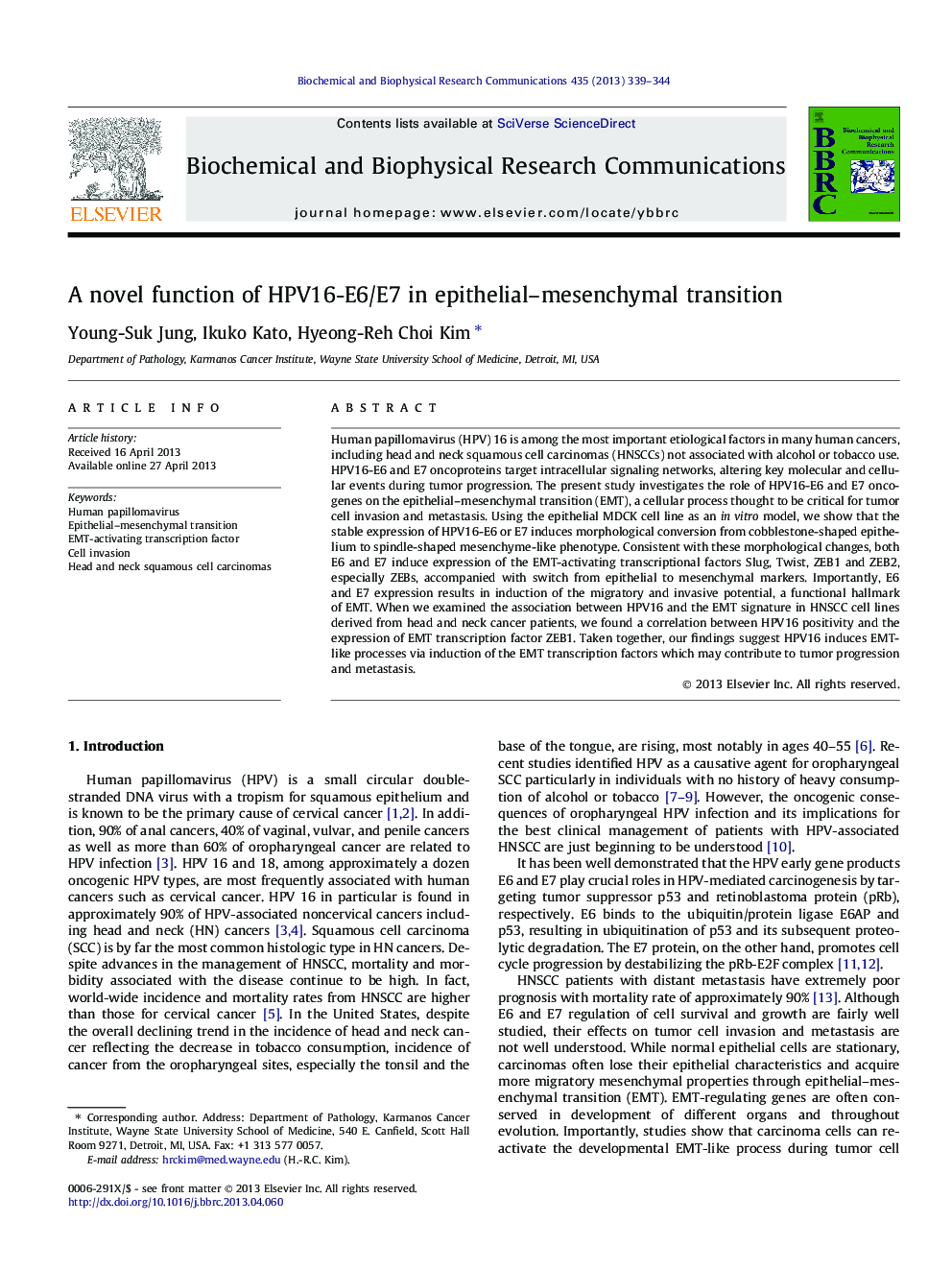| Article ID | Journal | Published Year | Pages | File Type |
|---|---|---|---|---|
| 10759289 | Biochemical and Biophysical Research Communications | 2013 | 6 Pages |
Abstract
Human papillomavirus (HPV) 16 is among the most important etiological factors in many human cancers, including head and neck squamous cell carcinomas (HNSCCs) not associated with alcohol or tobacco use. HPV16-E6 and E7 oncoproteins target intracellular signaling networks, altering key molecular and cellular events during tumor progression. The present study investigates the role of HPV16-E6 and E7 oncogenes on the epithelial-mesenchymal transition (EMT), a cellular process thought to be critical for tumor cell invasion and metastasis. Using the epithelial MDCK cell line as an in vitro model, we show that the stable expression of HPV16-E6 or E7 induces morphological conversion from cobblestone-shaped epithelium to spindle-shaped mesenchyme-like phenotype. Consistent with these morphological changes, both E6 and E7 induce expression of the EMT-activating transcriptional factors Slug, Twist, ZEB1 and ZEB2, especially ZEBs, accompanied with switch from epithelial to mesenchymal markers. Importantly, E6 and E7 expression results in induction of the migratory and invasive potential, a functional hallmark of EMT. When we examined the association between HPV16 and the EMT signature in HNSCC cell lines derived from head and neck cancer patients, we found a correlation between HPV16 positivity and the expression of EMT transcription factor ZEB1. Taken together, our findings suggest HPV16 induces EMT-like processes via induction of the EMT transcription factors which may contribute to tumor progression and metastasis.
Keywords
Related Topics
Life Sciences
Biochemistry, Genetics and Molecular Biology
Biochemistry
Authors
Young-Suk Jung, Ikuko Kato, Hyeong-Reh Choi Kim,
